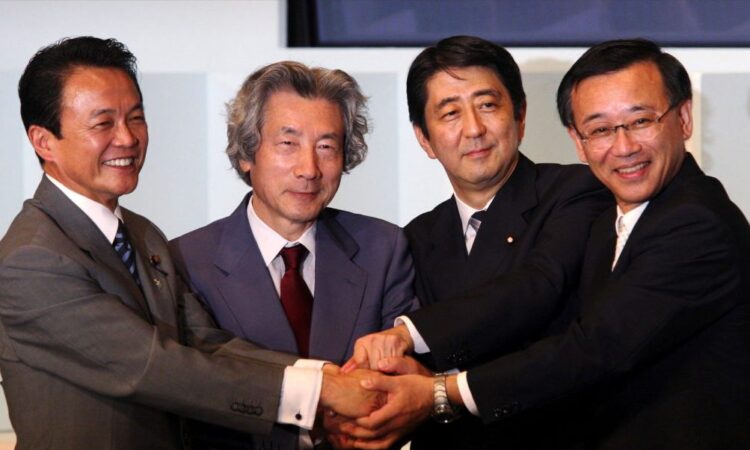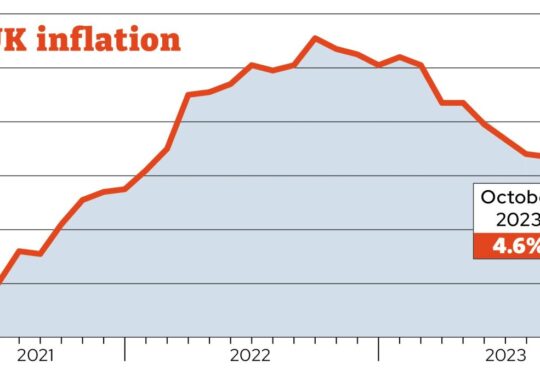
Kristin Surak
It was a real turning point for Japan. To understand why, it’s important to go back and look at how Japan transitioned out of World War II, when it was a defeated, destroyed country. It’s often forgotten, for example, that the firebombing of Tokyo killed more people than the atomic bomb attacks on Hiroshima and Nagasaki. In terms of real estate and property, much of the country was flattened.
There was a very strong focus on capitalist production and economic expansion coming straight out of the war. By the 1960s, Japan had really taken off in a way that no other country had managed in the world until that point. There was 10 percent growth annually across the 1960s, which only China has been able to match in recent times.
Japan was able to grow so fast because it was very cheap to export. The Japanese yen was pegged against the US dollar at a favorable rate, so as soon as Japan ramped up industrial production again, it was able to export quite cheaply and sell a lot of goods to the United States in particular.
In time, this would create a huge current-account surplus with the United States, which Washington didn’t like. In 1985, Japan and the United States negotiated the Plaza Accords, which led to a great strengthening of the yen, making it more expensive for Japan to export to the United States. At the same time, with the yen increasing in value, land prices began shooting up.
Land was being used as collateral for loans driving this capitalist expansion, and the result was an extraordinarily precarious situation. It was a huge real estate bubble in which the imperial palace grounds in Tokyo were at one point worth as much as the entire state of California. The numbers involved were just astounding.
This was all very obvious to the bureaucrats running the show, especially at the Bank of Japan, and they tried very cautiously to let some of the steam out of the bubble. But as soon as they did that, the whole thing simply collapsed. That was in 1989–90.
At first, nobody was quite sure what was going on, because Japan had been posting phenomenal growth rates. It looked like an enormous powerhouse that was potentially going to be overtaking the United States. But after a few years of zero growth rates in the 1990s, people began to think that this might be a more permanent situation than we had anticipated.
The collapse of the real estate bubble produced a lot of zombie companies, as they were known, which had much greater debts than assets, but were at the same time too big to fail. These were some of the biggest companies in Japan. The indebted companies were employing people and driving the country forward.
For a period of almost thirty years from the early 1990s, Japan experienced no inflation. People have described it as an entirely comatose economy. There was a very low level of growth — much lower than before. Remarkably, the price of something in 1990 would often still be exactly the same in 2015.
The shift from high-paced economic growth to stagnation meant that there was a strong shift toward focusing on social problems. Those problems were brought to a head by two major crises.
One was the great Kobe earthquake of 1995, which happened in a very industrialized, built-up part of Japan, almost foreshadowing what is predicted to happen in Tokyo in the next couple of decades. Tokyo has had regular massive earthquakes in the past, and it’s now been a while since the last one, so it’s definitely on the docket for one in most people’s lifetimes.
Secondly, there was the sarin gas attack by the Aum Shinrikyo cult on the Tokyo subway in 1995, which killed a couple of dozen people. That was something nobody had expected, in what was considered to be a very harmonious society.
There were other social problems, like very low birth rates combined with very high life expectancies. In place of the familiar demographic pyramid, with a lot of young people and a much smaller top level with fewer old people, Japan’s demographic structure looks more like a column, because there are so few young people and so many old people. That has a big economic impact.
In terms of employment, it’s interesting to think through these issues in relation to the West, because some of the problems Japan has been facing for the past thirty years are ones that Western countries are now beginning to face. The situations aren’t exactly the same: for example, there’s massive inflation in the West right now — over 10 percent in some countries — whereas in Japan, it’s only about 3.5 percent. Although that’s considered very high by Japanese standards, it’s still a figure that would make people in the United States or the UK quite jealous.
However, there are certainly parallels to be drawn, as Western countries face the challenge of low-growth economies and the consequences of massive monetary easing. The debt-to-GDP ratio in Japan is extraordinary — much higher than it was even for Greece at the peak of the Greek economic crisis. The ratio is currently almost 270 percent, and the Japanese authorities just keep printing money.
Japan’s population has been stagnating, which we are also seeing today in Western countries. Social services have been crumbling since the 1990s as well. A lot of the problems that Japan has been dealing with for some time are now hitting the West in very interesting ways.
It’s important to remember, though, that none of this has generated as much social protest as one might expect. There hasn’t been a very strong anti-capitalist movement or a movement for gender equality. There’s a little bit more of a movement on gay rights.
Youth employment prospects are getting worse and worse, but you still don’t see a lot of people taking to the streets, certainly not in comparison to the social upheaval of the 1950s and ’60s, when you could sometimes have a million people on the streets protesting US imperialism, for example. In that sense, the crash of the economic bubble around 1990 was a major turning point, not only economically, but socially and politically as well.






